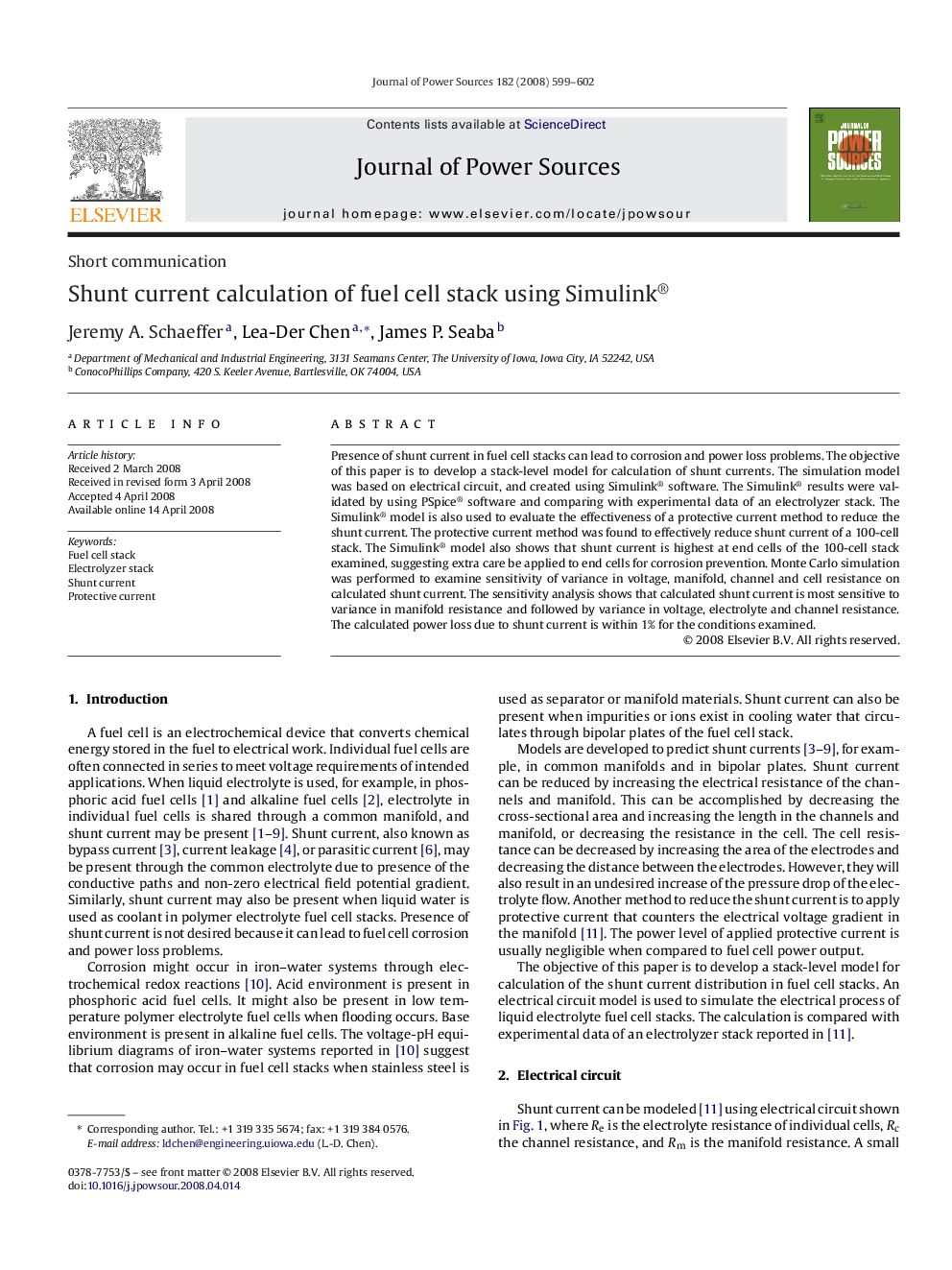| Article ID | Journal | Published Year | Pages | File Type |
|---|---|---|---|---|
| 1290047 | Journal of Power Sources | 2008 | 4 Pages |
Presence of shunt current in fuel cell stacks can lead to corrosion and power loss problems. The objective of this paper is to develop a stack-level model for calculation of shunt currents. The simulation model was based on electrical circuit, and created using Simulink® software. The Simulink® results were validated by using PSpice® software and comparing with experimental data of an electrolyzer stack. The Simulink® model is also used to evaluate the effectiveness of a protective current method to reduce the shunt current. The protective current method was found to effectively reduce shunt current of a 100-cell stack. The Simulink® model also shows that shunt current is highest at end cells of the 100-cell stack examined, suggesting extra care be applied to end cells for corrosion prevention. Monte Carlo simulation was performed to examine sensitivity of variance in voltage, manifold, channel and cell resistance on calculated shunt current. The sensitivity analysis shows that calculated shunt current is most sensitive to variance in manifold resistance and followed by variance in voltage, electrolyte and channel resistance. The calculated power loss due to shunt current is within 1% for the conditions examined.
